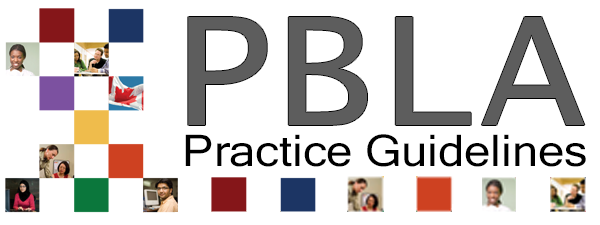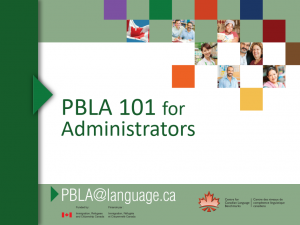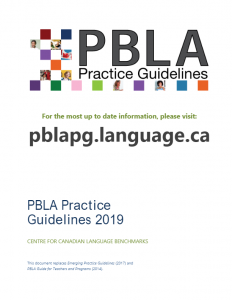PBLA Foundations
Features of PBLA
Features of PBLA
PBLA is a comprehensive, systematic, and collaborative approach to language assessment based on the use of real world language tasks. It is teacher-led and classroom-based and integrated throughout the teaching/learning cycle. Together, teachers and learners collaborate to set language learning goals, compile examples of language proficiency and learning in a variety of contexts over time, analyze the data, and reflect on progress.
The process helps learners become more autonomous, self-aware, and responsible for their learning.
PBLA is only one instance of many portfolio assessment applications. It uses learning portfolios, drawing on the best features of other types of portfolios:
A process portfolio: The PBLA portfolio documents the learning journey over time and therefore includes more than the end products of learning. Because it includes skill-using tasks, it can help teachers see progress and development.
An evaluation portfolio: The PBLA portfolio includes evidence of performance based on specific criteria from the CLB standard.
A presentation portfolio: The PBLA portfolio highlights learner strengths and skills and provides opportunities for learners to reflect and comment on their work and take pride in their achievements. This is especially evident in the learner conferences which are always based on portfolios.
The PBLA portfolio helps learners develop valuable metacognitive skills when they engage in self-assessment and reflection. These skills have been shown to have a significant, positive impact on learning.
Throughout the program, learners collect examples of skill-using and assessment tasks that demonstrate learning in the four skills: Listening, Speaking, Reading, and Writing. They maintain their portfolios in their Language Companion, a binder that they receive at the outset of their language training.
Throughout the term, learners are encouraged to self-assess and to think reflectively about their language learning process. At key intervals, each learner, with the teacher’s assistance, uses the accumulated data to discuss progress towards their goals, to highlight ongoing or emerging challenges, and to discuss strategies to overcome them. Teachers use what they learn from these reflections to modify instruction.
At the end of the term or reporting period, the teacher collects the learners’ portfolios, reviews the collected data and other records, evaluates the language-learning outcomes, assigns benchmarks, and prepares progress reports. The teacher then meets with each learner to go over the report and discuss the supporting data from the portfolio.


